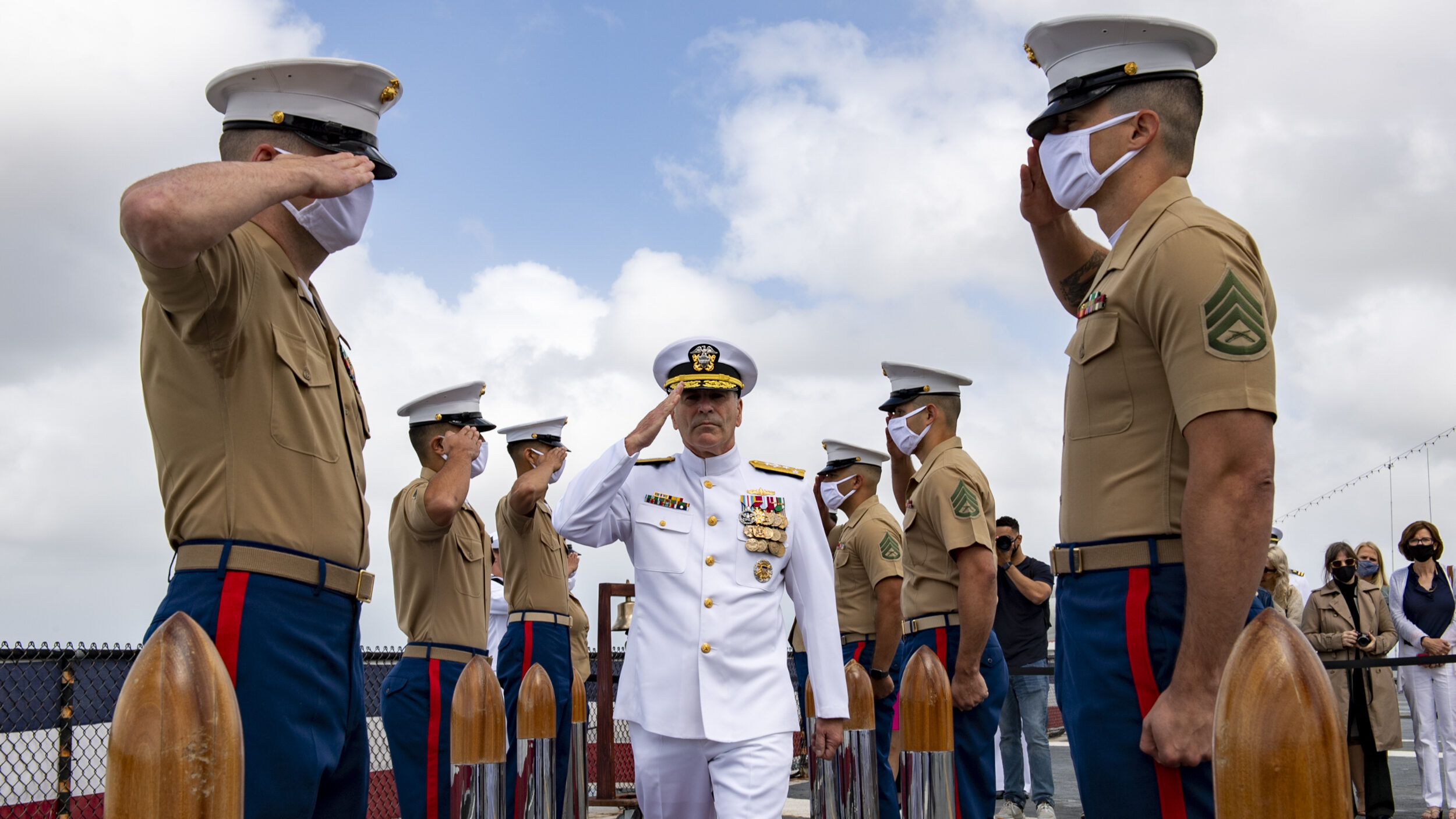
Vice Adm. Roy Kitchener, Commander, Naval Surface Force, U.S. Pacific Fleet, arrives at the Naval Reserve Officer Training Corps (NROTC) San Diego graduation ceremony. (U.S. Navy photo by Mass Communication Specialist 2nd Class Kevin C. Leitner)
SNA: The Navy’s top surface warfare officer is pressing for a revamp of the surface fleet’s maintenance practices, new roadmaps for key weapon systems the force will depend on and the installation of weapons tactics instructors into acquisition offices, citing the strategic competition the US military expects to face moving forward.
“The surface force and the surface warfare enterprise must better align in order to get in front of the challenges we face — challenges stemming from serious strategic competition and the complexity of the force we are becoming,” Vice Adm. Roy Kitchener wrote in a white paper, “Surface Warfare: The Competitive Edge,” published on Tuesday during the Surface Navy Association’s national symposium.
The admiral describes the next decade as one of “unprecedented complexity” in which the Navy will be fielding the new SPY-6 family of radars, its next generation electronic warfare system, dubbed SEWIP Block III, and latest iteration of the Aegis Weapon System.
To do this, the document calls on the program executive offices, the group of acquisition agencies responsible for purchasing every weapon, ship and plane in the fleet, to install warfare tactics instructors “to ensure tight coupling of concepts with acquisition.”
Kitchener’s paper also “requires” the director of surface warfare requirements to produce an “Integrated Combat System Campaign Plan” as well as the program executive office for integrated weapon systems to make a corresponding “roadmap.”
As the top operational surface warfare officer, Kitchener is not directly in the chain of command for the Navy’s requirements directorates or acquisition organizations. However, in a speech on Tuesday and in the document itself, he explained that he has received support from those organizations to move forward with the actions his paper describes.
It also calls on a greater use of data analytics to propel ship maintenance.
“We will think differently about the fleet we have, and we will consider ways of getting more out of it. More ready ships means harnessing the power of data analytics to anticipate maintenance and modernization requirements that then translate into well-defined, well-executed work packages,” the document states.
Similar to other documents from senior Navy leadership, such as Navy Secretary Carlos Del Toro’s strategic guidance, Kitchener calls out the challenges posed by Russia and China specifically.
“Global competition with China and renewed tension with Russia are the main strategic drivers for Navy planners. We are competing with first-rate navies — and other joint sea denial capabilities — whose reach extends far beyond territorial seas. China provides the pacing threat,” he writes.
Other lines of effort in the admiral’s white paper focus on improving shore-based infrastructure needed to support the fleet and the development of new concepts by Mine Warfare Development Command.






















